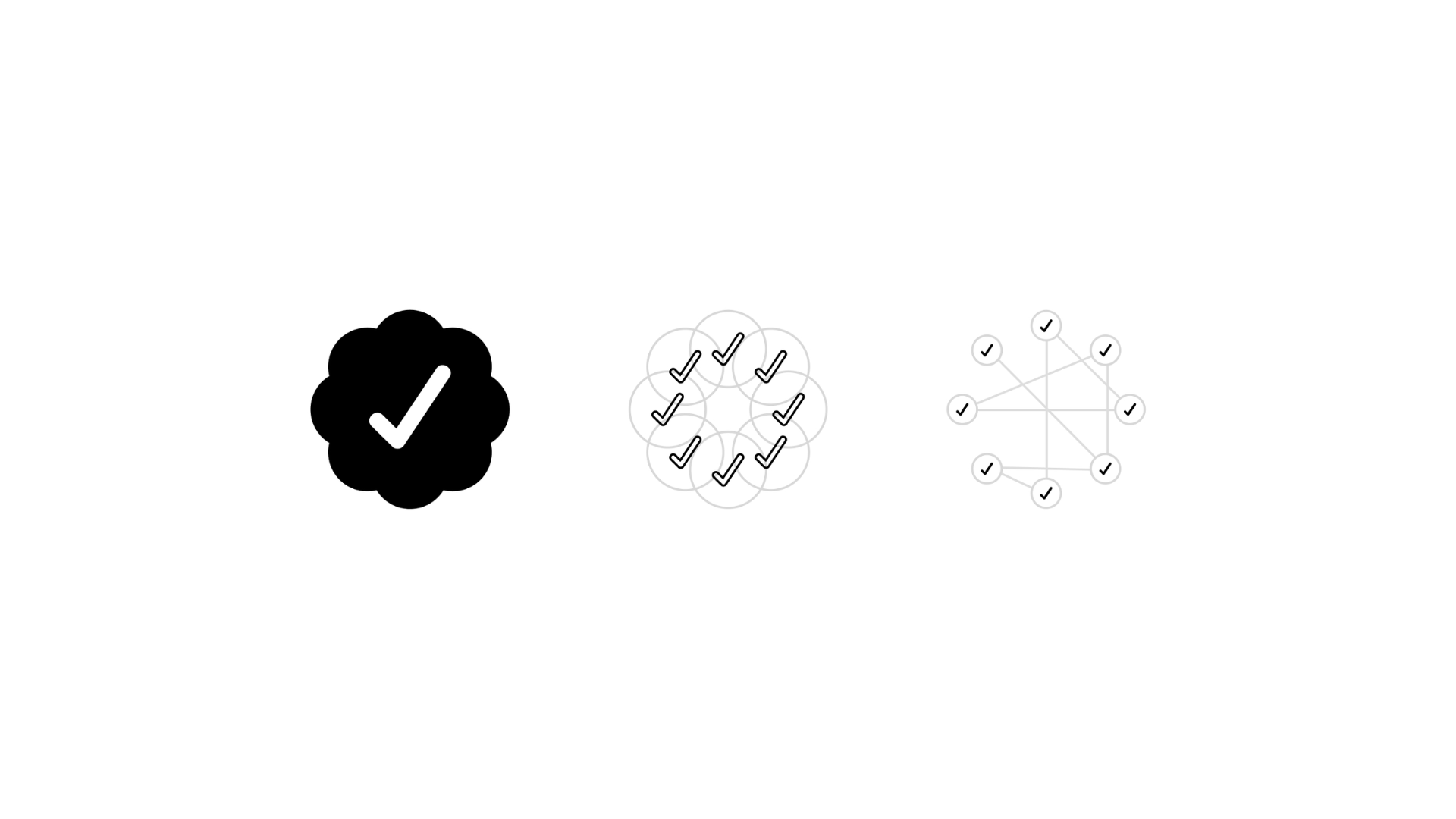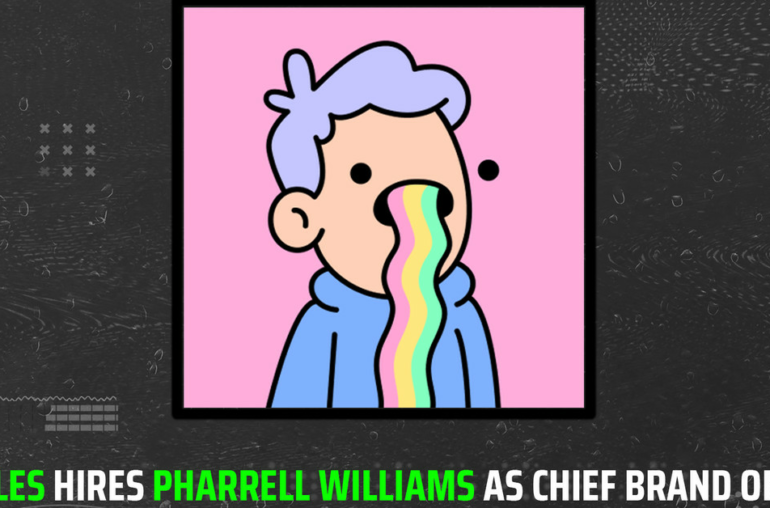Every week we simplify the market into key points so you can stay up to date on market trends, upcoming drops, top project guides and much more!
BY Eric James Beyer
January 24, 2023
When Elon Musk bought Twitter in October 2022, the internet collectively braced itself. The world’s richest human’s new toy was now a social media platform with an active user base of 368 million accounts — what could go wrong? One of the billionaire’s first changes to Twitter was to upend its “lords and peasants” system of deciding who gets a blue checkmark next to their name on the site. These checks, which users had to apply for, were a designation of the notability, activity, and authenticity of accounts. In place of that top-down system, users could now simply buy blue-check-mark-notability for eight dollars a month.
To distinguish accounts that Twitter verified using its original system, a message crops up when you click the blue check mark next to a user’s name: “This is a legacy verified account. It may or may not be notable.” That middling statement could be the most accurate emblem of where the internet stands as it straddles the line between reliance on centralized authorities and building a more decentralized, empowering, and ground-up way of doing things via the blockchain. This idea wasn’t lost on artist, designer, and Twitter Blue Subscriber Jack Butcher, who saw the Twitter verification debacle as the perfect cultural storm to explore via the release of Checks VV. A 24-hour open edition NFT artwork released on January 3, 2023, Checks has since become one of the most innovative NFT projects the space has seen — and it’s just getting started.
With its conceptual roots in a March 2021 1-of-1 NFT called “NFTs, explained” from Butcher’s creative agency Visualize Value, Checks’ artwork is about as visually simple as it gets: 80 Twitter checkmarks of varying colors arranged in a grid.
But what began as a one-off social commentary artwork quickly became a thought-provoking exercise on social status and motivation in an online world. Checks’ open edition saw 16,031 mints of the artwork in total and has seen just shy of 2,000 ETH in secondary sales on OpenSea. Having been blown away by its success, Butcher decided to take the project further, pushing the boundaries of what NFTs can do and how people perceive their very nature.
“Exploring NFTs as a canvas for art can go so much further than pointing to an image.”
“It’s a combination of the eight dollars to buy status and this idea that verification and notability are now something that we have the infrastructure to assign from the bottom up,” Butcher explained while speaking to nft now. “The reception to the open edition created this amazing opportunity to elaborate on the premise and continue to push the question and play with the concept in a deeper and more interesting way.”
One of the ways Butcher is experimenting with this concept is by changing the metadata (appearance) of the NFTs in the collection, encouraging people to think about what an NFT really is.
“What are you buying when you’re buying an NFT?” Butcher posed to the Web3 community. “Are you buying an image? I’m not debating that you aren’t buying art. I’m [challenging] whether you’re buying an image […]. They are digital collectibles, to some extent. But exploring NFTs as a canvas for art can go so much further than pointing to an image. And that’s where I get into the mechanics of the second phase of the experiment.”
Checks’ second phase involves a burn dynamic that creates unique (and sometimes conflicting) incentives for holders, causing them to pause and ponder what they are doing with their NFT and why. Once Butcher rolls out the infrastructure, Checks holders will be able to burn their NFT to make it an on-chain piece of artwork.
Holders of multiple editions can then take Checks further: burning two 80-check pieces creates an artwork with 40 checks, burning two 40s creates a 20-check piece, and so on down the line, hitting benchmarks of 10, five, four, and ultimately resulting in a single colored checkmark artwork.
Recruited the legendary @jalil_eth & @traf to build some proper tech for the next round.
Below courtesy of the giga talented @traf (all this animation is done in-browser) pic.twitter.com/f1YNBQF1Kw
Only 250 of those could possibly exist, given the number of holders in the collection, but it doesn’t stop there. If a holder acquires and burns 64 single colored-check pieces, they can produce a single black check artwork. Of those, only three can ever exist, the result of burning 4,096 editions of the 80-check artwork. This creates an interesting reverse dynamic for holders, however. While the single check pieces are rarer (and thus, more valuable in the traditional NFT collecting sense), the more tokens burned to chase those pieces, the rarer the 80-check pieces become.
“There are murmurs of people interested in putting DAOs together to go after it.”
The further a collector goes along with the project, the more options they’ll have. To increase collector agency at every point in the collection’s creative journey, Butcher is letting holders play around with token IDs and even color schemes. When a collector burns two pieces to create a new NFT, for example, they must choose which token ID to preserve, which Butcher hopes will reveal what numbers people find important.
As the coloring of the pieces in the collection is affected by the particular tokens that come together to be burned, Butcher also believes holders might strategize their approach according to visual preference rather than rarity. He predicts that some may use specific color schemes to create pieces unique to them as collectors, almost like forging their own special PFP via the burning mechanics involved.
“There have been people reaching out to get access to the contracts to set up trustless [bodies] to pool resources to go after [the single black checks],” Butcher said of his predictions of how people will interact with the collection’s rarer pieces. “There are murmurs of people interested in putting DAOs together to go after it.”
Butcher is thrilled to see several derivative projects spinning off of Checks. He says he’s happy to bring attention to artists and community members who are innovating with the artwork but might not have the distribution potential that he does. Along with his technical team of Web3 builders jalil.eth and traf, Butcher devoted a page on the official Checks VV website to derivative projects.
”Genesis Check"
Seize the meme of verification.https://t.co/0SnbAGrEnD
provenance ↓ pic.twitter.com/mFhvrJSWHk
As of writing, Butcher hasn’t released the code for holders to start burning their digital tokens. When he does, the community he’s built around Checks will take the project on its own trajectory. Whether or not his predictions about the collection will come true is yet to be seen. Still, Butcher has already done what few other projects in the space have even considered achieving: using NFTs to reflect on the internet culture from which they emerged while leaving it to the community to create their future.
“We’re thinking how we can evolve this piece of art to really understand people’s intentions,” Butcher said of his motivations behind the project. “To reveal something about how people would want to play this game.”
He’s referring to Checks here, but that statement could easily be applied to the wider NFT world. Checks VV is a microcosm of that larger ecosystem, encouraging people to think about what they’re doing on every level possible while inviting them to take ownership of the thoughts and behaviors that lead them there. “This artwork may or may not be notable,” Butcher wrote when he released the single artwork open edition that started it all. Satire aside, few would argue that Checks VV is the latter.


